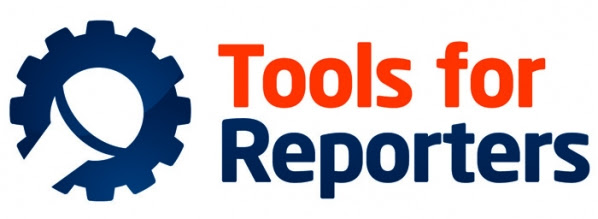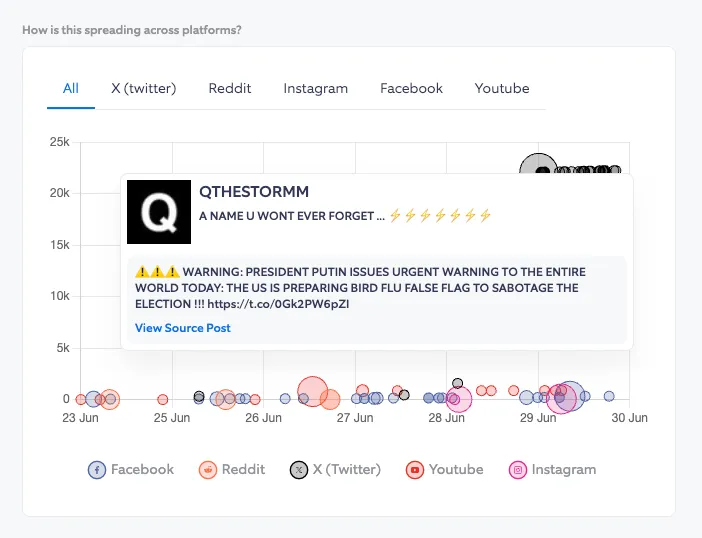If you didn’t see the post last month, Rolli is sponsoring this newsletter as part of a effort to reach as many journalists as possible before the election. This time, we’re talking about their ambitious and fascinating Information Tracer tool.
It uses AI to locate social media posts that may be the originators of misinformation. Cool goal, right? I tried it on a rumor about bird flu and global elections. The rumor is totally false, but where did it come from?
Rolli searches social media (Facebook, Twitter, Instagram, the usuals) to find posts that are especially influential. These are often (though not necessarily always) the source of these rumors.
I also like that Rolli also returns genuine news sources – in this case, an NBC news roundup that mentions the US election and a (separate, unrelated) increase in bird flu cases. The coincidence of those two events may be what inspired those original posts, but who knows.
I will share my ever-present AI disclaimer: always fact check any AI-generated information (including this one), thoroughly, before publishing! In this case, Rolli also links to the original tweets, which is a good place to start.
If you’d like to try the Information Tracer, you do have to sign up for a free Rolli account, but then just search away. As we know, misinfo is a very big problem that is not going away anytime soon. Don’t fall for it, reporters!

